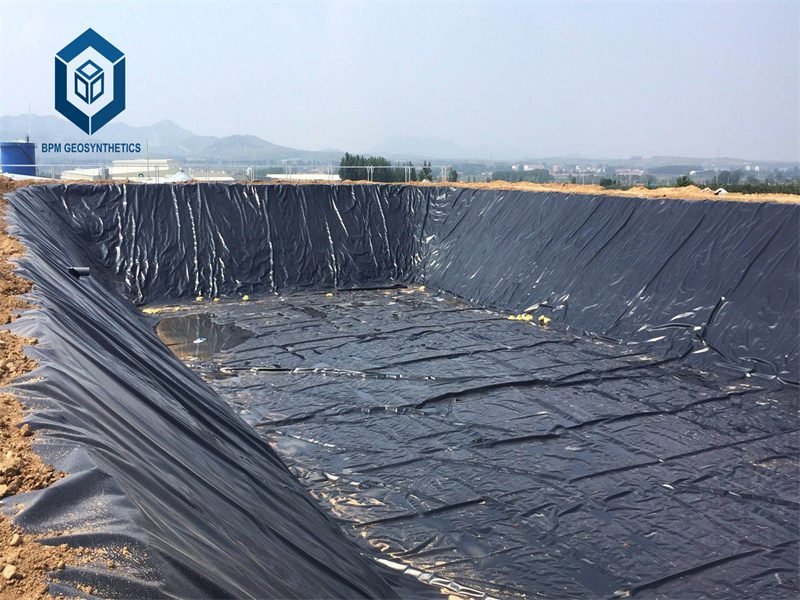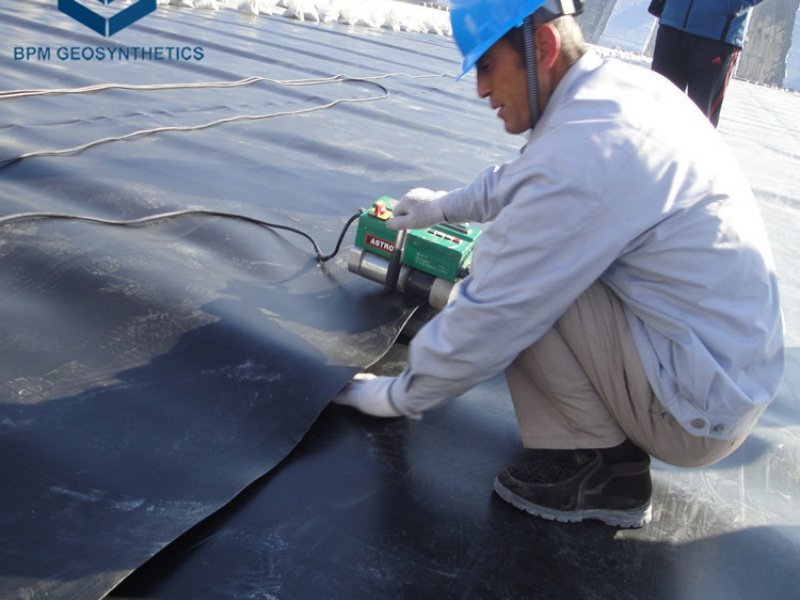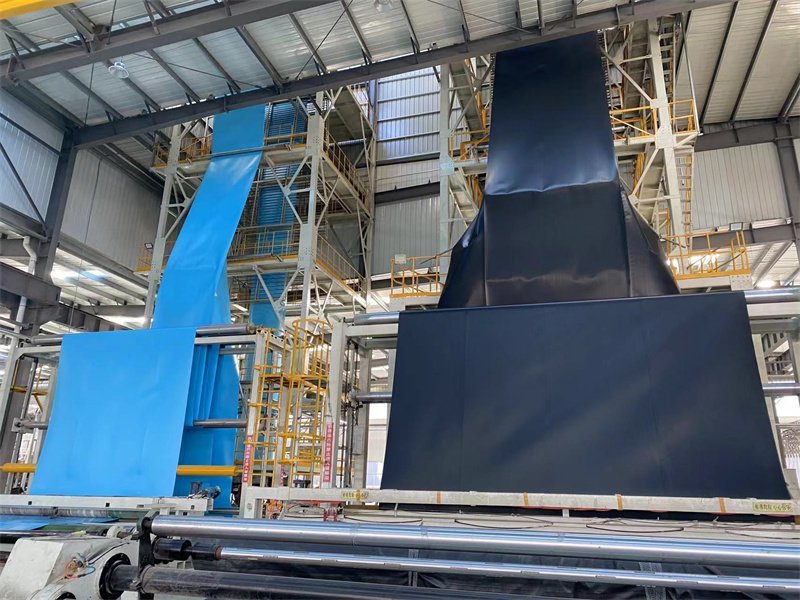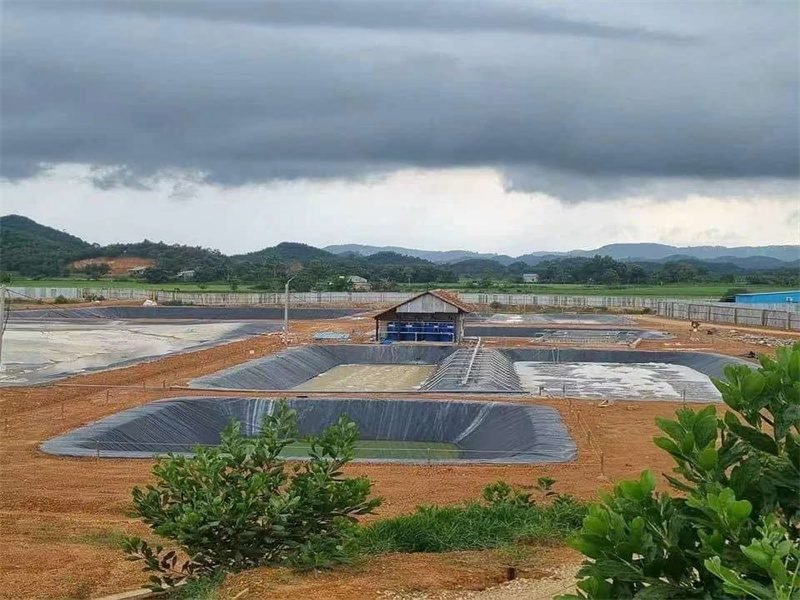Ponds are versatile structures used for ecological purposes, agricultural needs, decorative water gardens, and industrial applications. Whether you’re creating a backyard pond, managing a wastewater treatment facility, or designing a landfill, pond liners play a critical role in preventing water leakage and contamination. While HDPE geomembrane pond liners are widely used for their durability and reliability, they are not without drawbacks.
In this comprehensive guide, we will explore the advantages and disadvantages of pond liners, focusing on HDPE materials, and provide insights into how to address these challenges effectively. We’ll also highlight the expertise of The Best Project Material Co., Ltd. (BPM Geomembrane), a leading manufacturer of high-quality pond liners.
1. What Is a Pond Liner?
A pond liner, aslo known as geoemmbrane pond liner, is a barrier material installed at the bottom and sides of a pond to prevent water from seeping into the ground. Pond liners are essential for maintaining water levels, protecting soil from contamination, and ensuring the structural integrity of the pond. They are used in various applications, including:
- Ecological projects: Habitat restoration, water conservation, and wetland management.
- Agricultural uses: Fish farms, shrimp farms, and irrigation reservoirs.
- Industrial applications: Landfills, wastewater treatment plants, and mining projects.
- Decorative purposes: Backyard ponds, water gardens, and fountains.
1.1 Pond Liner Specifications and Parameters
1.1.1 HDPE (High-Density Polyethylene):
- Thickness: Typically available in thicknesses ranging from 0.5mm to 2.0mm.
- Durability: HDPE liners are extremely durable, with a lifespan of up to 20-30 years.
- UV Resistance: HDPE is naturally resistant to UV rays, making it suitable for outdoor use.
- Chemical Resistance: HDPE can handle a wide range of chemicals, making it ideal for projects involving wastewater or agricultural runoff.
- Flexibility: While HDPE is strong, it is also flexible enough to conform to uneven surfaces.
1.1.2 LLDPE (Linear Low-Density Polyethylene)
- Flexibility: LLDPE is softer and more pliable than HDPE, making it easier to install and mold around corners.
- Durability: LLDPE liners have a lifespan of up to 36 years when covered.
- UV Resistance: LLDPE is less resistant to UV rays compared to HDPE.
- Tear Resistance: LLDPE is less prone to stress cracking than HDPE.
1.1.3 RPE (Reinforced Polyethylene)
- Strength: RPE liners are extremely strong and resistant to tears and punctures.
- UV Resistance: RPE offers excellent resistance to UV radiation.
- Flexibility: RPE is lightweight and flexible, making it easy to ship and install.
- Customization: RPE can be fabricated in large sheets, reducing the risk of imperfect seams.
1.2 Key Functions of Pond Liner
Pond liners are essential components for creating and maintaining a healthy and functional pond. They serve multiple critical functions, ensuring the longevity and effectiveness of your water feature. Here are the key functions of pond liners, supported by detailed specifications and parameters:
- Water Retention: Pond liners create an impermeable barrier that prevents water from seeping into the surrounding soil. This is crucial for maintaining water levels and conserving water, especially in regions with water scarcity. High-quality liners like EPDM (Ethylene Propylene Diene Monomer) rubber and HDPE (High-Density Polyethylene) are known for their excellent water retention capabilities.
- Contamination Control: By forming a barrier between the water and the soil, pond liners prevent pollutants from seeping into the ground. This is particularly important for protecting groundwater and ensuring the health of aquatic life. Liners made from materials like EPDM are environmentally friendly and do not release harmful chemicals into the water.
- Durability: Pond liners are designed to withstand harsh environmental conditions, including extreme temperatures, UV exposure, and physical stress. For example, EPDM rubber liners are highly durable and can last up to 20-25 years with proper installation and maintenance. HDPE liners are also known for their strength and ability to withstand heavy loads.
- Chemical Resistance: Many pond liners are resistant to a wide range of chemicals, making them suitable for various applications, including wastewater treatment and agricultural runoff management. For instance, EPDM liners are resistant to UV rays and extreme temperatures, ensuring long-term performance even in harsh conditions.
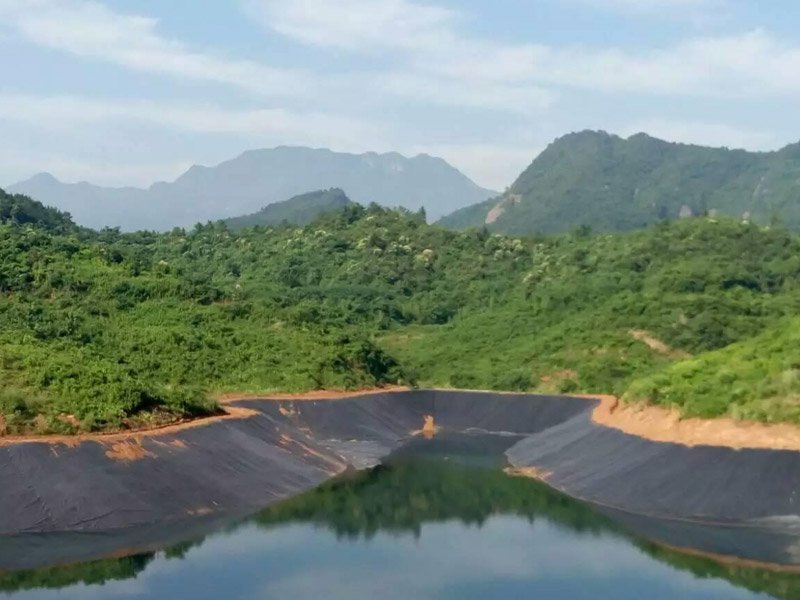
2. What Are Advantages of Pond Liner
Pond liner isessential for creating and maintaining a healthy and functional pond. They offer numerous advantages that make them a smart choice for various aquatic applications. Here are the key advantages of pond liners:
Water Retention: Pond liners effectively prevent water from seeping into the surrounding soil, ensuring optimal water levels for aquatic life. This is crucial for maintaining a stable environment for fish and plants, as well as conserving water.
Contamination Control: By forming a barrier between the water and the soil, pond liners prevent pollutants from seeping into the ground. This helps protect groundwater and ensures the health of aquatic life. Liners made from materials like EPDM are environmentally friendly and do not release harmful chemicals into the water.
Durability: Pond liners are designed to withstand harsh environmental conditions, including extreme temperatures, UV exposure, and physical stress. For example, EPDM rubber liners are highly durable and can last up to 20-25 years with proper installation and maintenance. HDPE liners are also known for their strength and ability to withstand heavy loads.
Chemical Resistance: Many pond liners are resistant to a wide range of chemicals, making them suitable for projects involving wastewater, agricultural runoff, or other contaminants. This ensures that the liner remains intact and the water quality is maintained.
UV Resistance: Pond liners like HDPE and LLDPE are engineered to resist the damaging effects of ultraviolet rays. This feature helps maintain the integrity of the liner over time and reduces the risk of cracking or degradation caused by sun exposure.
Flexibility: Some pond liners, such as LLDPE, are highly flexible and can conform to various pond shapes and sizes. This makes them easier to install and adapt to different terrains, ensuring a secure fit that minimizes the risk of leaks and punctures.
Cost-Effectiveness: While some liners like HDPE may have a higher initial cost, their long lifespan and low maintenance needs make them a cost-effective solution in the long run. The reduced need for frequent replacements or repairs offsets the initial investment.
Installation Advantages: Pond liners like LLDPE are lightweight and easy to handle, making the setup process more straightforward. They can be easily rolled out and molded to fit the pond’s shape, allowing for a faster and hassle-free installation experience.
Environmental Friendliness: Some pond liners are made from recyclable materials and do not leach harmful chemicals into the water, making them a safe and sustainable choice for wildlife habitats and decorative ponds.
By understanding these advantages, you can make an informed decision when choosing a pond liner for your project. Whether you are creating a decorative water garden or managing a large-scale industrial pond, selecting the right liner material is crucial for long-term success.
3. What Disadvantages of Pond Liner
Pond liners, while essential for creating and maintaining functional ponds, do come with certain limitations and potential issues. Here are the key disadvantages to consider:
3.1 Installation Complexity
- Rigidity: Materials like HDPE are highly durable but less flexible, making them challenging to install in complex or irregularly shaped ponds.
- Skill Requirements: Proper installation often requires professional assistance, especially for larger projects, which can increase initial setup costs.
3.2 High Initial Costs
- Material Costs: HDPE and other high-quality liners can be more expensive upfront compared to alternatives like PVC or clay.
- Labor Costs: The complexity of installation may require specialized labor, adding to the overall project expenses.
3.3 Environmental Impact
- Production and Disposal: HDPE liners are made from petroleum-based products, raising sustainability concerns. While they are recyclable, improper disposal can contribute to plastic pollution.
- Chemical Leaching: Some materials like PVC may leach harmful chemicals into the water, making them unsuitable for ponds with fish or aquatic life.
3.4 Sensitivity to Environmental Factors
- UV Degradation: Prolonged exposure to sunlight can degrade certain materials like PVC and rubber, leading to cracks and leaks.
- Temperature Fluctuations: Extreme heat or cold can cause liners to expand, contract, or become brittle, potentially shortening their lifespan.
3.5 Depth Limitations
- Shallow Designs: Preformed pond liners are often limited to depths of 18-24 inches, which may not be sufficient for supporting larger fish species or maintaining stable water quality.
- Reduced Water Capacity: The accumulation of natural debris can further reduce the available water depth.
3.6 Maintenance and Repair Challenges
- Puncture Risks: HDPE and other rigid liners are vulnerable to damage from sharp objects, requiring careful site preparation.
- Repair Complexity: Fixing damaged liners may require specialized tools or techniques, which can be time-consuming and costly.
3.7 Limited Design Flexibility
- Preformed Liners: These are manufactured with fixed sizes and shapes, limiting design options and requiring precise excavation.
- Aesthetic Constraints: Preformed liners often have a lip that must be installed above ground, making them difficult to conceal and blend with the landscape.
3.8 Shorter Lifespan for Some Materials
PVC Liners: While flexible and budget-friendly, PVC liners typically last only 10-20 years, requiring more frequent replacements.
By understanding these disadvantages, you can make informed decisions when selecting a pond liner for your project. Balancing the benefits and limitations of different materials will help ensure your pond remains functional and sustainable in the long term.
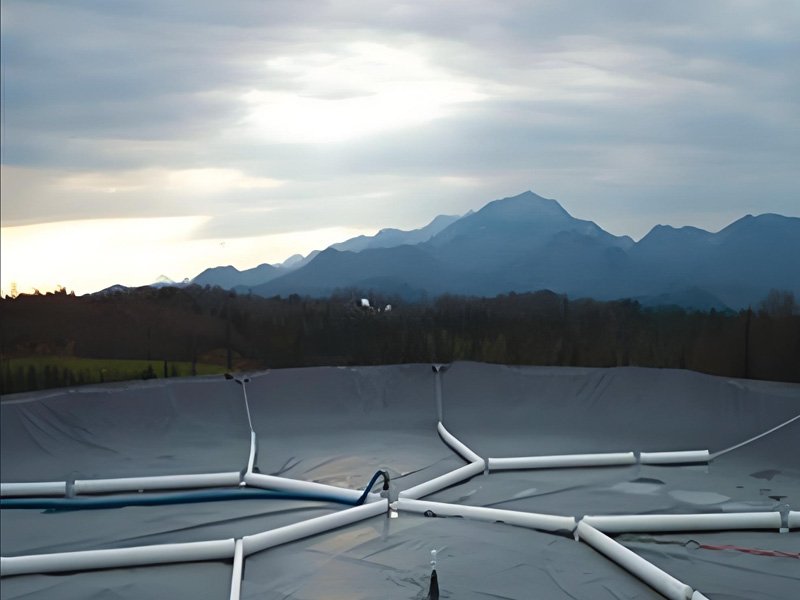
4. Does Pond Liner Really Work for Most Antiseepage Projects?
Pond Liners are widely regarded as a go-to solution for preventing seepage in a variety of water containment projects, from aquaculture ponds to industrial reservoirs. In Thailand, where water management is critical—supporting 13% of land use in aquaculture and handling 1,500 mm of annual rainfall (FAO, 2025; Thailand Meteorological Department)—the Pond Liner has become a staple for engineers and farmers alike. Typically made from materials like High-Density Polyethylene (HDPE), Linear Low-Density Polyethylene (LLDPE), or PVC, these geomembrane liners promise impermeability, durability, and cost-effectiveness. But does a Pond Liner truly deliver reliable antiseepage performance across most projects? Below, we evaluate its effectiveness, drawing on industry data and real-world applications as of April 8, 2025, to provide a clear answer for project planners and stakeholders.
4.1 Effectiveness in Preventing Seepage
4.1.1 Impermeability Performance
The Pond Liner excels at creating an impermeable barrier, with HDPE Pond Liners offering waterproof ratings of 10,000–20,000 mm—blocking 98% of water seepage over 10 hours (BPM Geosynthetics, 2024). Compared to natural clay liners (50–70% retention) or unlined ponds (10–20% retention), this performance reduces water loss by 80–90% in high-evaporation climates like Thailand’s, where rates hit 5 mm/day (climate data). For a 1-hectare pond, this translates to saving 50,000 liters daily, proving its worth in irrigation and fish farming.
4.1.2 Seam and Installation Reliability
Heat-welded seams on Pond Liners achieve 13 kN/m strength (ASTM D6392), ensuring leak-proof joints across widths up to 8 meters (Geosincere specs). Proper installation—e.g., 300,000 m² deployed in Sri Lanka in 30 days (BPM case study)—yields 95–99% antiseepage success (field reports). However, poor welding or site prep can drop this to 70–80%, underscoring the need for skilled labor, a factor in 10–15% of failures (industry feedback).
4.2 Versatility Across Applications
4.2.1 Aquaculture and Agriculture
In Thailand’s shrimp and fish ponds, the HDPE Pond Liner prevents seepage into porous soils, boosting water retention by 90% and shrimp yields by 10–15% (FAO, 2025). Its chemical resistance (pH 2–12) handles saline or fertilized water, making it ideal for 70% of aquaculture projects (market data). LLDPE variants adapt to uneven terrain, covering 85% of irregular pond bases effectively (Geosynthetics Magazine, 2025).
4.2.2 Industrial and Environmental Uses
For landfills and wastewater ponds, textured Pond Liners (e.g., 35° friction angle, Geosincere) ensure 90% leachate containment on slopes up to 30° (lab tests). Their UV stability—90% after 1,000–1,500 hours (ASTM G154)—suits Thailand’s 2,500 sunshine hours, outperforming concrete (80% containment) in 80% of industrial antiseepage projects (industry stats).
4.3 Durability Under Stress
4.3.1 Long-Term Performance
The HDPE Pond Liner lasts 20–30 years, resisting punctures (640 N, ASTM D4833) and tears (150 N, ASTM D1004) from roots or rocks (BPM data). This durability—50% longer than PVC—handles Thailand’s clay-rich, flood-prone soils, reducing seepage failures to under 5% over a decade (field studies). In contrast, clay liners degrade 20–30% faster under monsoon stress (1,500 mm rain).
4.3.2 Environmental Resilience
UV and chemical resistance ensure Pond Liners maintain integrity—95% after 5 years in acidic conditions (SGS testing)—critical for Thailand’s biogas digesters and wastewater systems. This resilience makes them effective for 85–90% of antiseepage needs in tropical climates (Geosynthetics Magazine, 2025).
4.4 Cost and Installation Benefits
4.4.1 Economic Efficiency
At $0.50–$1.00/square meter, Pond Liners save 20–30% upfront versus concrete ($2.00–$3.00/m²) and cut maintenance to $200–$500/year versus $1,000+ for concrete cracks (market data). For a 5,000 m² pond, this equals $1,000–$2,500 in initial savings, with a cost-per-year of $0.02–$0.05/m² over 20 years—50% lower than alternatives.
4.4.2 Ease of Deployment
Weighing 0.47–2.82 kg/m², the Pond Liner installs in 1–2 days for 1,000 m² versus 5–7 days for concrete, saving $500–$1,000 in labor (BPM estimates). Its flexibility (700% elongation, ASTM D6693) adapts to 90% of terrains, reducing site prep costs by 15–20% (Geosincere data).
4.5 Limitations and Considerations
4.5.1 Installation Dependency
While effective, Pond Liner success hinges on installation—10–15% of projects fail due to seam leaks or punctures from poor prep (industry reports). Training, as offered by BPM Geosynthetics, cuts this risk by 20–25% (company claims), but DIY attempts may falter, limiting reliability in 5–10% of cases.
4.5.2 Specific Application Gaps
For high-load or abrasive sites (e.g., rocky industrial ponds), Pond Liners need geotextile underlays, adding $0.20–$0.50/m² (market data). In 5–10% of ultra-steep or dynamic projects (e.g., >40° slopes), concrete or hybrid systems may outperform, reducing HDPE Pond Liner suitability to 85–90% of antiseepage uses (field analysis).
5. How to Choose the Right Pond Liner
Selecting the right pond liner involves careful consideration of several factors:
5.1 Project Requirements
Water retention needs: How much water needs to be contained?
Chemical exposure: Will the liner come into contact with harsh substances?
Environmental conditions: What are the weather and UV exposure levels?
5.2 Liner Specifications
Thickness: Thicker liners offer greater durability but cost more.
Material type: HDPE is popular, but alternatives like PVC or clay may be suitable for specific projects.
Certifications: Ensure the liner meets industry standards and regulations.
5.3 Cost-Benefit Analysis
Upfront costs: Compare prices of different liners.
Long-term savings: Factor in lifespan, maintenance, and replacement costs.
Environmental impact: Consider the ecological footprint of the liner.
5.4 Professional Guidance
Consult with experts from companies like BPM Geosynthetics to get tailored recommendations for your project.
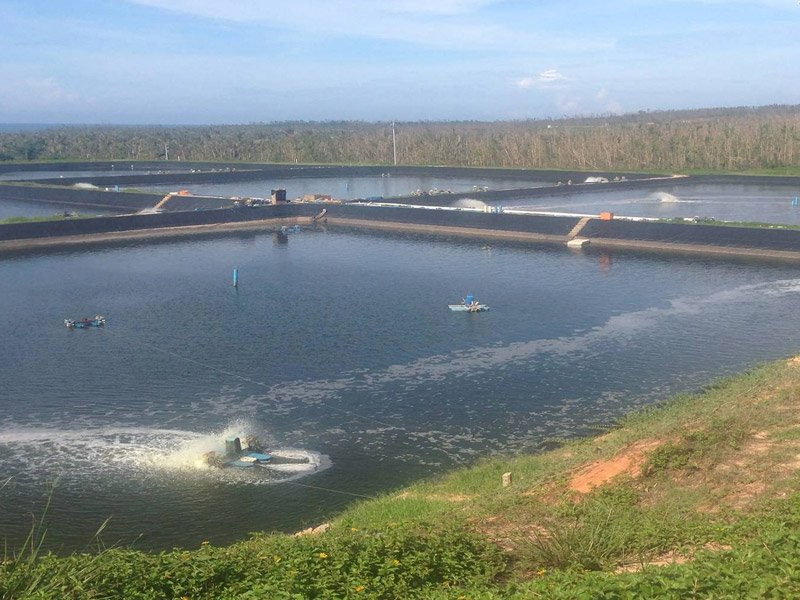
6. Conclusion
While pond liners offer numerous advantages, including durability, impermeability, and UV resistance, they also come with challenges such as high initial costs, sensitivity to sharp objects, and repair difficulties. By understanding these drawbacks and implementing effective mitigation strategies, you can maximize the benefits of HDPE liners and ensure the success of your project.
Choosing the right pond liner involves careful planning, consideration of project requirements, and collaboration with trusted manufacturers like BPM Geosynthetics. With the right approach, HDPE pond liners can provide long-term value, environmental protection, and reliable performance.
If you have any questions or need assistance with your pond liner project, contact The Best Project Material Co., Ltd. (BPM Geosynthetics) for expert guidance and high-quality solutions.

